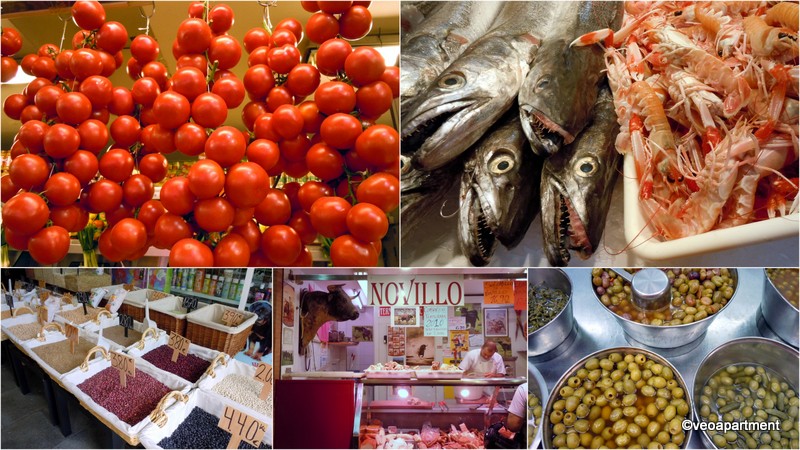There are always good reasons to visit Granada. The best known is Europe’s most visited monumental complex, the Alhambra Palace, last refuge of the Moors in Spain, and capital of the Nasrid dynasty of Spain for 250 years until it surrendered to the Catholic monarchs Ferdinand and Isabella in 1492. There are also the historic neighbourhoods of the Albaicin, Realejo and Sacramonte to explore, and the bars and restaurants of San Matias to sample some of the local hospitality. But this time of year, as spring turns to summer, is when Granada puts on its gladrags and celebrates some of its major festivals.
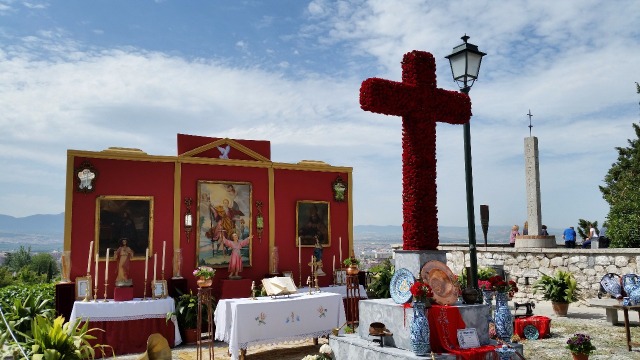 Cruz de Mayo at Mirador de San Cristobal [photo courtesy of John Sullivan]
Cruz de Mayo at Mirador de San Cristobal [photo courtesy of John Sullivan]
The first of these is the Cruces del Mayo (May Crosses), held on May 3, although celebrations continue for several days around the official one. According to the stories this is the day when Saint Helen, the mother of the Emperor Constantine, discovered the pieces of the True Cross of Jesus Christ in Jerusalem, but this event has been assimilated to a pagan spring flower festival. The result is the appearance of flower-decked crosses in the streets and plazas of the city (this year about 80 of them), with a competition for the best. The festival has a special emphasis on children, who build their own crosses and parade them through the streets.
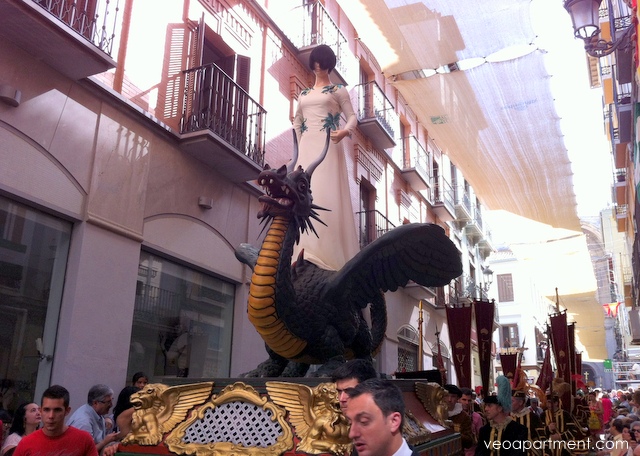 Dragon float
Dragon float
Undoubtedly the principal attraction of this time of year, and in fact Granada’s biggest annual festival, is around Corpus Christi (this year falling on June 4), and includes Granada’s feria, bullfighting, the Corpus Christi religious processions, and the essentially pagan procession of La Tarasca. The Feria of Granada starts officially at midnight on Saturday May 30 with the Alumbrao, the switching on of the lights, though people will start coming to the fairground earlier in the day. It ends at midnight the following Saturday with a fireworks display. Like most Spanish fairs the daytime is for the parades of horses and carriages, their riders and drivers in traditional costume, and everything and everyone at their smartest and shiniest. Night time is for eating and drinking and dancing flamenco.
From Thursday June 4 to Sunday June 7 is Granada’s main bullfighting season, with fights at the bullring each evening at 7 pm.
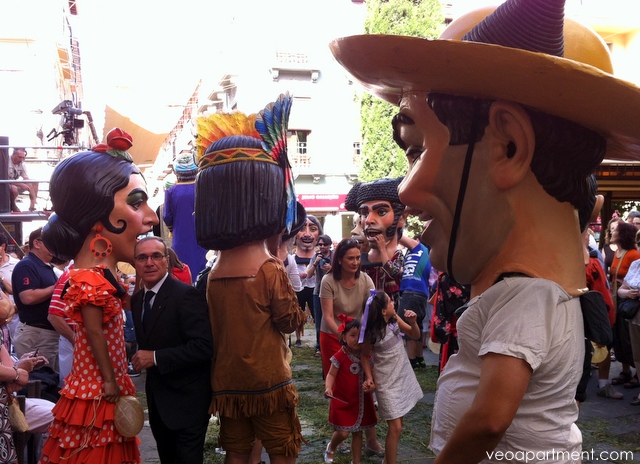 La Tarasca
La Tarasca
At midday on Wednesday is Granada’s famous La Tarasca procession. The participants wear big papier-mache heads and fancy dress costumes (which are a closely guarded secret until the parade assembles in the Plaza del Carmen), but the centrepieces are the gigantes – statues of famous historical figures, and the traditional fire-breathing dragon. It’s colourful and noisy in the best carnival tradition and draws huge crowds of both locals and visitors, so arrive early if you want a “ringside seat”. This is the most popular day of the holiday, so afterwards the partying will carry on until the small hours, so you need plenty of stamina.
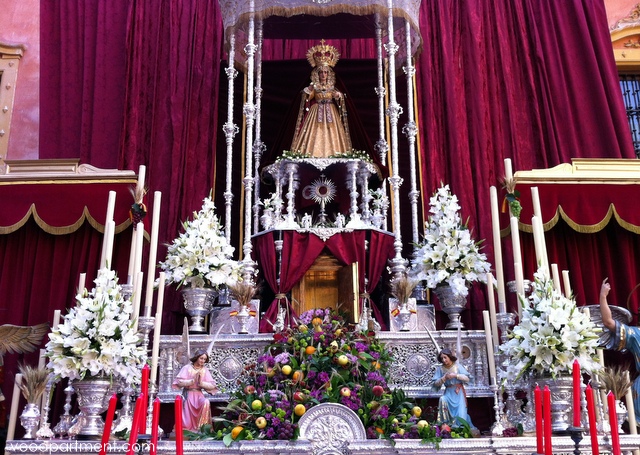 Corpus Christi altar
Corpus Christi altar
The following day (starting at the Cathedral at 10.15 am) is the religious procession of Corpus Christi, the Catholic celebration of the Eucharist. This is the solemn and serious part of the holiday, and is still a popular day in the religious calendar, with large numbers paying their respects to the Sacrament as it’s carried through the streets.
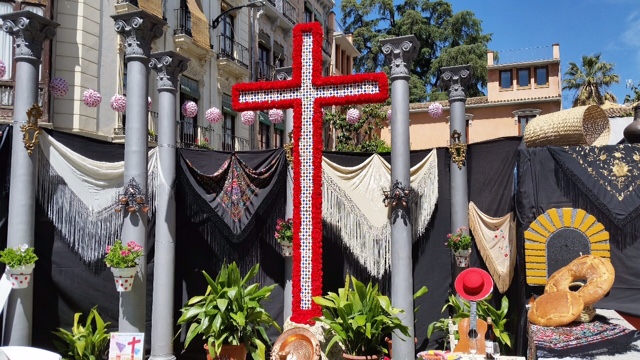 Cruz de Mayo at San Agustín Market [photo courtesy of John Sullivan]
Cruz de Mayo at San Agustín Market [photo courtesy of John Sullivan]
If you’re coming to Granada for the celebrations we still have apartments for rent in locations around the city centre and old town.
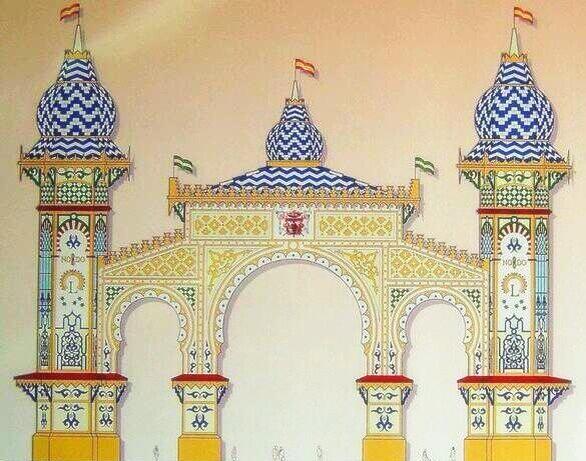 Feria de Abril Portada 2014
Feria de Abril Portada 2014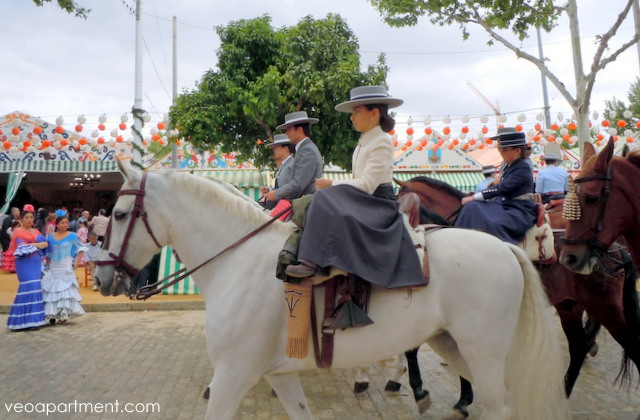
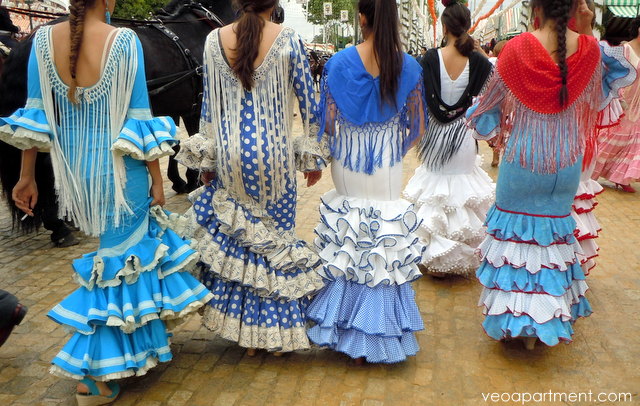
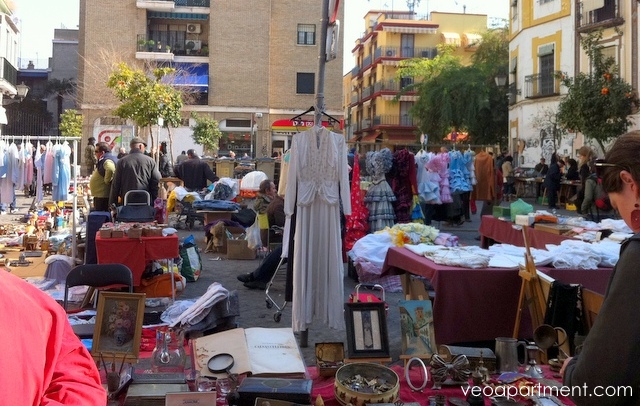
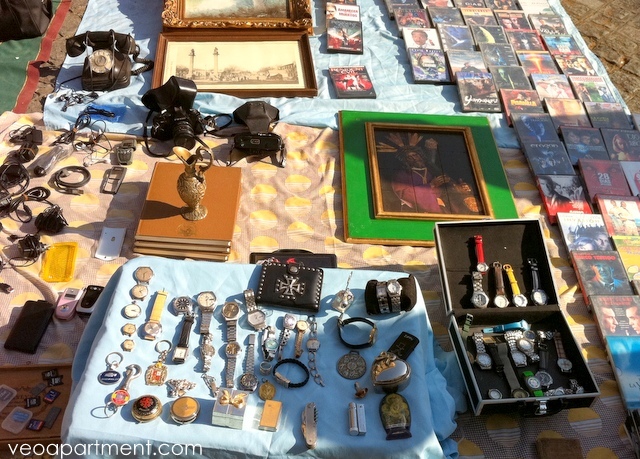
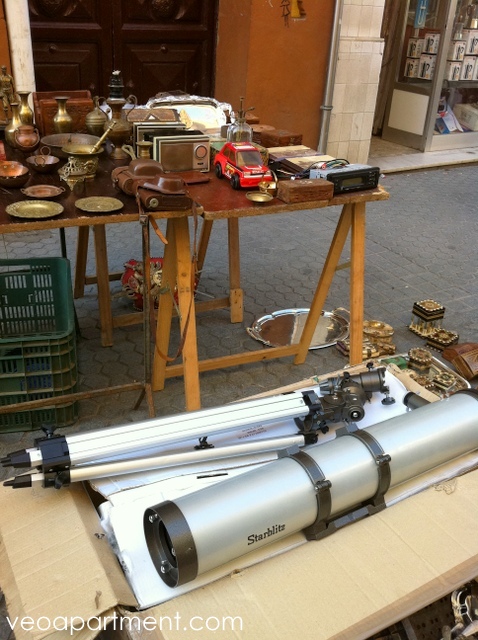
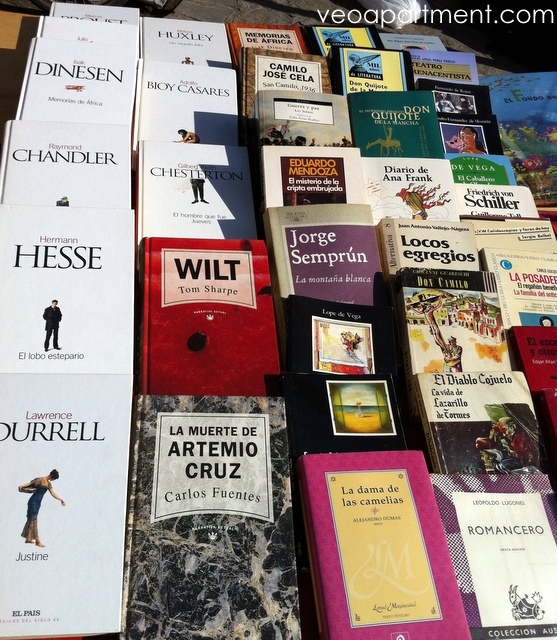
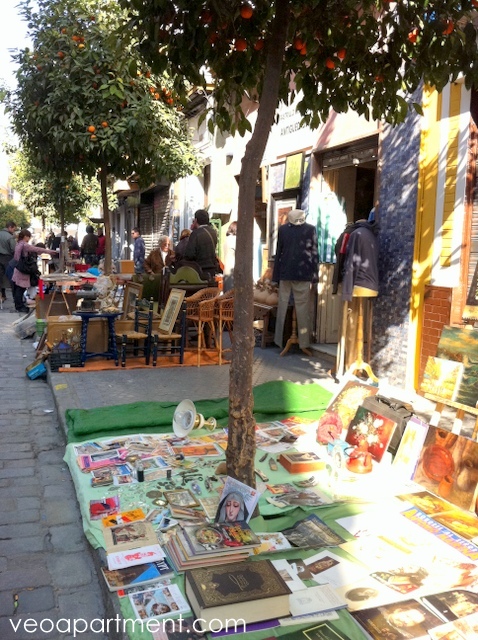
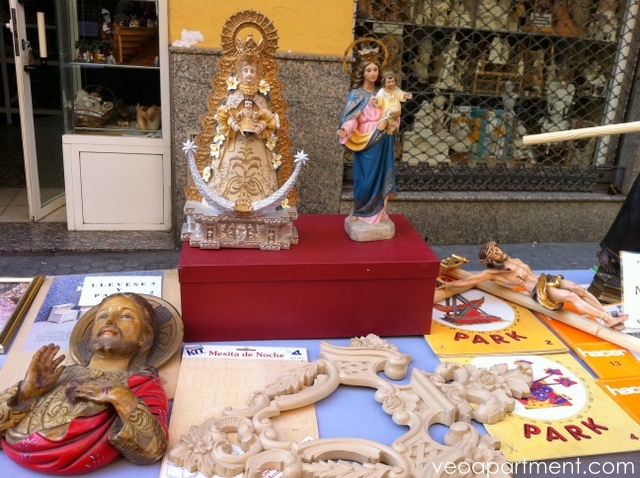
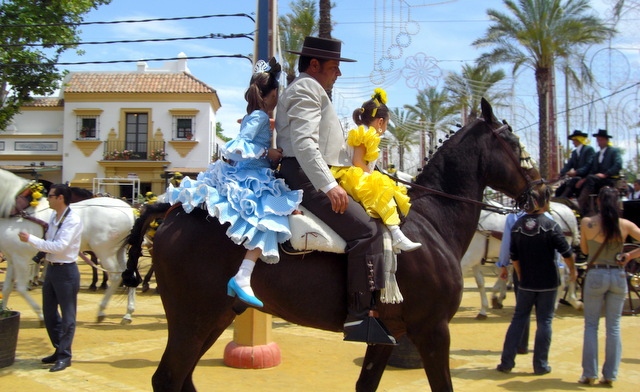
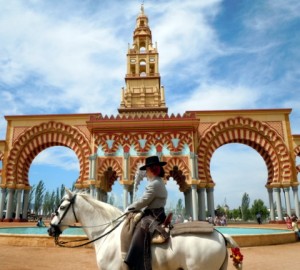 Córdoba
Córdoba